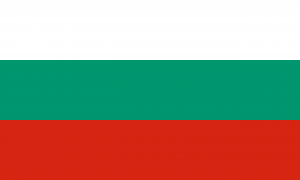Language/Bulgarian/Culture/Puppet-Theatre
 Հայերէն
Հայերէն 官话
官话 官話
官話 Hrvatski jezik
Hrvatski jezik Český jazyk
Český jazyk Nederlands
Nederlands English
English Suomen kieli
Suomen kieli Français
Français Deutsch
Deutsch עברית
עברית हिन्दी
हिन्दी Magyar
Magyar Bahasa Indonesia
Bahasa Indonesia فارسی
فارسی Italiano
Italiano 日本語
日本語 Қазақ тілі
Қазақ тілі 한국어
한국어 Lietuvių kalba
Lietuvių kalba Νέα Ελληνικά
Νέα Ελληνικά Şimali Azərbaycanlılar
Şimali Azərbaycanlılar Język polski
Język polski Português
Português Limba Română
Limba Română Русский язык
Русский язык Српски
Српски Español
Español العربية القياسية
العربية القياسية Svenska
Svenska Wikang Tagalog
Wikang Tagalog தமிழ்
தமிழ் ภาษาไทย
ภาษาไทย Türkçe
Türkçe Українська мова
Українська мова Urdu
Urdu Tiếng Việt
Tiếng Việt
| ◀️ Bulgarian Theatre — Previous Lesson | Next Lesson — Dance ▶️ |
Puppet theatre has a long tradition in Bulgarian culture, dating back to the Middle Ages. During this time, puppets were used for religious and educational purposes, as well as for entertainment. Today, Bulgarian puppet theatre is known for its colorful characters and lively performances.
Don't hesitate to look into these other pages after completing this lesson: Bulgarian Culture → Bulgarian Theatre and Performance Arts ..., Clothes in Bulgaria, Bulgarian Cinema & Family in Bulgaria.
History of Bulgarian Puppet Theatre
The history of Bulgarian puppet theatre can be traced back to the 11th century, when Byzantine missionaries brought the art of puppetry to Bulgaria. Over time, puppetry became an important part of Bulgarian culture, with puppet shows performed in villages and towns across the country.
In the 19th century, puppetry became more sophisticated, with the introduction of new materials and more complex designs. During this time, puppet shows evolved from simple street performances to elaborate productions, often staged in theaters.
Today, puppet theatre is still a beloved art form in Bulgaria, with performances ranging from traditional fairy tales to modern interpretations of Bulgarian literature.
Characters of Bulgarian Puppet Theatre
Bulgarian puppet theatre features a colorful cast of characters, each with their own unique personality and traits. Here are some of the most popular:
- Kuker: A male character who represents the spirit of spring and new life. Kuker is often depicted wearing a mask and a colorful costume.
- Baba Marta: A female character who represents the coming of spring. Baba Marta is often depicted wearing a red and white costume, and carrying a large bunch of flowers.
- Karagoz: A popular character in Turkish and Balkan puppetry, Karagoz is a witty and humorous trickster who often gets into trouble.
- Petrushka: A male character who represents the common man. Petrushka is often portrayed as naive and simpleminded, but with a good heart.
- Mavrudin: A male character who represents the Bulgarian rebel. Mavrudin is often portrayed as brave and fearless, standing up against oppression and tyranny.
Examples of Bulgarian Puppet Theatre
One of the most famous puppet theatres in Bulgaria is the Sofia Puppet Theatre, which has been entertaining audiences for over 60 years. The theatre performs a wide range of shows, from traditional Bulgarian folk tales to contemporary works of art.
Another popular puppet theatre is the Plovdiv Puppet Theatre, which has been in operation since 1948. The theatre is known for its innovative productions and use of puppetry techniques from around the world.
Conclusion
Bulgarian puppet theatre is a beloved art form with a rich history and colorful characters. Whether you are interested in traditional folk tales or modern interpretations of Bulgarian literature, there is sure to be a puppet show that will capture your imagination.
Sources
Upon wrapping up this lesson, take a look at these related pages: Breakfast in Bulgaria, Alphabet, Bulgaria Timeline & Public transportation in Bulgaria.
Other Lessons
- Holidays in Bulgaria
- Bulgarian Pop Music
- Traditional Bulgarian Music
- Weather in Bulgaria
- Literary Translation
- Clothes in Bulgaria
- Towns in Bulgaria
- Dance
- At the restaurant
- Bulgarian Theatre
| ◀️ Bulgarian Theatre — Previous Lesson | Next Lesson — Dance ▶️ |

